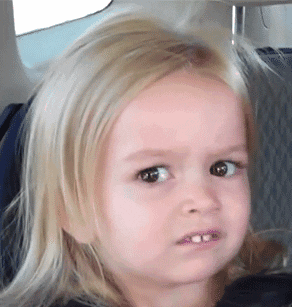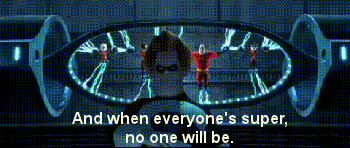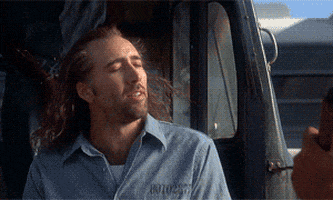Mullets for Mental Health
Mullets for Mental Health
A priest rocking a mullet. Elite private schools tearing down haircut regulations. Doting parents pushing their little darlings to shave the sides. A haircut of larrikinism and a simpler time, of rebellion and queer identity, suddenly driving a critical conversation around mental health. 5 million dollars raised.
These truly are… unprecedented times.
So what's all this about?
In 2020, the Black Dog Institute, one of Australia’s leading mental health and suicide prevention Not-For-Profits, launched a fundraising campaign called ‘Mullets for Mental health’. Experiencing the depths of lockdown boredom for the first time, 2020 quickly became – among other things – the year of the DIY haircut, and Black Dog decided to harness the trend for a good cause.
This has been a brilliant, worthwhile, and popular campaign that has rapidly taken its place in the pantheon of ‘dodgy do’s for a good cause’ (hello Movember and World’s Greatest Shave). Most importantly however, beyond being worth a good chuckle, it has also been extremely effective in achieving its objectives. With limited resources to spend, they’ve captured a wide range of audience groups and landed in the national dialogue, raising valuable funds for research and advocacy.
In the context of this success, this piece will interrogate the strategy behind their success, using a few common techniques and frameworks to retrospectively understand their strategic approach.
With that said, there’s no better place to begin with than Mark Pollard’s strategy framework.




You tell me why Google Search returns a deep-etched Mark Pollard
People don’t speak up about mental illness. Why?
Because it is stigmatised and socially punished. Why?
Because it’s easy to ‘otherise’ mental illness. Why?
Because it isn’t visible in people they know. Why?
Because poor mental health is uniquely isolating, and therefore, hidden.
The Problem
The Not-For-Profit market is intensely competitive and crowded. It’s difficult to differentiate a brand or product to consumers or even justify your comparative importance, particularly when the offerings of most charities are generally incredibly worthy. Black Dog Institute needed to raise funds, and they were struggling to stand out.
Wait, no – that’s a business problem. We need to dive deeper, because behind every business problem is a human cause.
Why does a mental health organisation struggle to stand out? Because the truth is, mental illness is an invisible ailment. Black Dog reports that 60% of people experiencing a mental illness will not seek help! If it is hard to be open, it means that potential advocates are more unlikely to speak up and support the campaign.
While this is a good starting place for a human problem, rigorous strategy involves diving deeper to find a problem’s root cause – something the core creative idea can then be built around. A useful laddering technique for that is called the ‘Five Whys’ (I believe clearly derived from the toddler’s interrogation technique ‘Infinite Whys’).
We start with the identified problem, and then keep asking ‘why’ until we hit the bottom.
There is a terrifying vulnerability in losing the security, the certainty, the control of your emotions and of your mind. Negative self-talk can mean withdrawal from relationships and social support – the very things that are critical to staying healthy.
And yet the sad irony is, the subjective experience of isolation belies the truth – the truth that 1 in 5 Australians experience poor mental health in a given year, which is a staggeringly high number of people when you think about it.
The core problem we ultimately land on is: Mental illness makes you feel alone in a crowd.
(I feel there’s a more dramatic way of writing this – ‘Everyone in a crowd feels alone when the light is switched off’? – but I can’t crack it)

Toddlers, man

Or maybe Sydnrome worked out the dramatic reading
The Advantage
Once a problem is delved deep into and decided, Mark Pollard’s strategy framework moves to outline an advantage – something that makes you unique and motivating in people’s minds.
I think this problem outlined can be reframed quite simply into an advantage. 1 in 5 is a significant number of people. If an awesome (industry term) creative execution can catch the public’s attention, the advantage is a theoretical market of 5 million people could deeply resonate with a message of mental health solidarity and acceptance. There’s a shared common experience hidden in plain sight that can be leveraged through a socially driven, interactive campaign.
The Insight
So, we know the human problem we’re up against, and we have an advantage up our sleeves to work with. Mark (I feel we’re on a first name basis by now) next calls for an insight, an ‘unspoken truth that shines new light on the problem’.
For creative teams, the insight is ideally the part of the brief that leaves them thinking “… that’s interesting.” It should inspire ideation and creativity down fertile paths. At best, it should shock with an unarguable recognition of its truth. An insight is the truth, told slant.
This is obviously a high bar.
But to that, world champion pole vaulter Mondo DuPlantis sniffs and says, ‘high bars exist to be cleared’. So let’s give it a crack.
This brief ultimately aims for behaviour change. Inspiring our audience to open conversations about mental health that normalise the experience, and encouraging them to be proactive in reaching out. And yet, how do you cause the behaviour change of speaking up when our target market is so particularly recalcitrant?
Maybe there’s a way this entrenched behaviour can offer an opportunity?
Maybe I should stop asking rhetorical questions and just get to the point?
I think one answer is that we shouldn’t push them to speak up at all, because speaking isn’t the only way to gain attention. In fact, particularly with our target audience, taking on the burden of articulating their experience is possibly the last thing they want to do. As the saying goes, actions speak louder than words.
The insight, then: some people would do anything other than talk about mental health.


Mondo appreciates a good pun
'Anything', you say?
The strategy
Landing on the final strategy – mullets for mental health.
Black Dog took their initial soft launch from 2020 to Bounce Creative, briefing them to supercharge the campaign for 2021. The result was a simple and creative approach to amplifying the message: Show You’re All Ears. It’s quite a heart-warming idea that was gorgeously executed through photography, films, the website, and celebrity endorsements, and it was definitely on strategy – showing you’re ready to listen through your actions.
Now I’m all for frameworks and rules and structures, and Mark Pollard’s framework is a useful structure to facilitate deep thinking in a way that is practically useful for creative teams. However, to me there are a few other reasons why this campaign rocked, strategically speaking.
Context and culture
As the wise meme states, “We live in a society”.
This campaign is actually really simple when you boil it down. In 2020, mullets became on trend. Someone at Black Dog probably realised that ‘Mullets’ and ‘Mental Health’ both start with M. Like a fine wine and good cheese - voila.
Even better, as people became even more desperate for haircuts during lockdown, any excuse for a DIY would likely gain popularity. Lockdown itself had also added urgency with a burgeoning mental health crisis, as physical isolation and burnout universally caused increased distress.
Context and culture matter – there’s nothing that will increase brand relevance like becoming a living part of culture, and being closely aware of trends can make your messaging more meaningful.

Segmentation
Good strategists have a deep understanding of the consumer, and I think this campaign is brilliant because of how it cuts across so many segments with unique value propositions for each.
More than existing in isolation, you can also see how this plays out between the different audience groups, each sequentially pushing the next to participate in a superpowered adoption / innovation curve.
An arts student at university who moonlights in a punk band, sees this campaign and, in honestly an easy decision, shaves the mullet straight away. A quick snap for the ‘gram to follow.
His younger cousin Jake, who attends the local high school, sees the Instagram post and thinks it’s the coolest thing ever. He begs his parents to be allowed to get the cut and they reluctantly agree.
Turns out Jake is a bit of a trend setter in year 7. The next week, several other Crabbe and Goyle’s (i.e. cronies) have gotten their very own mullets.
An idealistic, young English teacher notices the trend. She reads about the campaign in an ABC article, thinks it’s a brilliant cause, and petitions the principal to start a school-sponsored fundraising drive.
The chaplain, Fr. Chris, is sentenced by popular vote to be sheared for the school’s Mullet donation drive. Bemused and befuddled, he becomes a folk hero.
As donations start to flood in from parents, one dad in particular wants to relate to his increasingly surly teenager. One high-priced barber visit later and shorn he is.
And on, and on, and on…
Now I admit this isn’t quite scholarly analysis, but a) this is my soapbox, get off my lawn; b) I genuinely think this campaign encourages an unusual word of mouth and ‘product’ adoption among unexpected audience groups. See exhibit A, below.

Taboo and risk
For many, the status of the haircut is taboo – restricted by social custom because of perceptions of class divide, or age, or ‘unprofessionalism’. This campaign provides moral licensing for an action many have always wanted to do, and acts as a safety blanket decreasing any social risk.
The shock factor of the breaking the taboo is a big part of why this is so attention-grabbing in the first place. It is such a likely conversation starter that is then an easy launching pad to discuss mental health. Who wouldn’t comment on Nick, 31, Accountant, getting the chop?
Furthermore, I think legitimising the mullet taboo under the auspice of charity creates psychological safety to also encroach on the taboo of mental health. When you’re already doing something shocking, by comparison it makes talking about mental health feel less uncomfortable or confronting.
The execution is strategic as well. Black Dog provide participants with a pre-written phrase for posting on social media and setting up the donation page. A template removes the pressure and risk of writing something individual and reduces friction in committing and actioning the final step.

